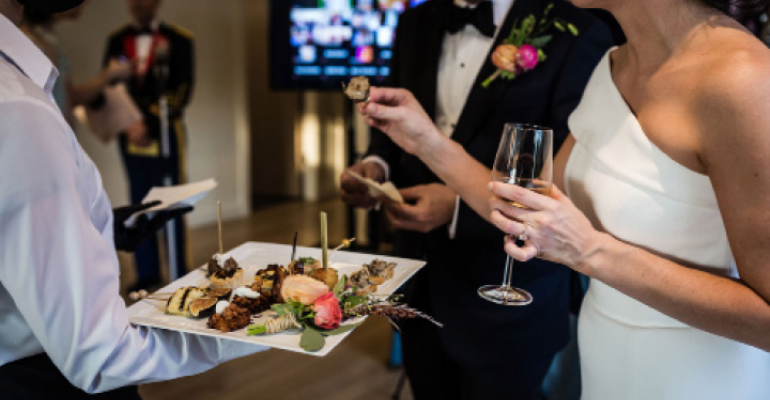Safety and security. Clear communication. Convenience and control. These three “big pieces of consumer emotion,” as noted by futurist Michael Rogers, are the major challenges event professionals will need to address as clients reach out for assistance in celebrating impactful moments of their lives. Addressing these inherent needs, sprung from the way business relationships changed during the 16-plus months of COVID lockdown, is about, “what … should remain in the virtual world; what should come back to the physical world—and how do we connect between them,” says Rogers.
Clients want to know that their events are safe, and they want absolutely no BS regarding the communication that addresses their needs. Additionally, having control over how guests experience an event, be it from home, office, or in-person, is a predominant trending ask.
The stats
In Germany, Colja Dams, CEO, VOK DAMS notes the company is going back to live…carefully. In a study the company conducted in Q3, “twenty-six percent of all inquiries received by VOK DAMS in Germany concern face-to-face events, 35 percent to hybrid events with a mix of digital and face-to-face components, and 39 percent to purely digital gatherings,” says Dams. “The economy in Germany is still initially focusing on the particularly flexible digital and hybrid formats, as companies need a longer lead time for their events and certainty in their implementation.”
But Dams sees other parts of the world responding to live events with greater frequency, citing a 30 percent increase in live event asks in China since the beginning of 2021, and “in the USA, too, inquiries for live events continue to rise, which VOK DAMS sees as a result of the country’s successful COVID-19 vaccination program.”
Connecting virtual & physical
At the start of 2021, Ty Kuppig, Founder & Creative Director for TYGER Event Design & Production noted for Special Events magazine, “I wholeheartedly believe that nothing compares to the sensory experience of an in-person event, so virtual will never be a replacement. But when we do return to in-person events, I see the importance of maintaining a virtual component as a valuable supplement to further reach and amplify messaging—allowing events to become more engaging than ever before.” A spot on prediction.
Much of what we do in our industry relies on all senses being engaged, from taste buds to scent, to tactile. It’s a fine line we straddle, but most signs point to offering hybrid for optimal “line straddling.” For those unable to travel to an event, be it across town or across the world, the “Hybrid Event Revolution,”as Julius Solaris of EventMB calls it, is here to stay.
“Hybrid event design is about creating something that is greater than the sum of its parts,” says Solaris. “It’s about integrating the two experiences so that they are robust in their own right but connected such that one improves the other.”
The corporate event and meetings world is also in agreement.
“Most companies still have the desire to have a virtual component to meetings and events,” says Lori Burden, Director of Sales and Marketing at The Sylvan hotel in Atlanta, about corporate events. “The Sylvan will be offering hybrid options in addition to the total in-person meeting offerings. Companies can host meetings and events without the need to be fully out of pocket on Zoom. Rather, you can gather and host in-person sessions and bring back the necessity of face-to-face employee connections while also having virtual components.”
How do you begin gathering the components to decide the best options for your clients’ events? At Informa PLC, headquartered in London and offering exhibition events worldwide (disclosure: Special Events magazine and The Special Event are owned by Informa PLC), its Connect division developed several virtual/physical format possibilities that have proved useful in the development of its own events. To be considered:
- What content and experiences will be face-to-face only; face-to-face but also streamed; or streamed only?
- What parts of the program or event can be delivered virtually before the event itself and supplemented with real time in-person engagement?
- What elements will be modified or not happen, dependent on COVID?
- What cost challenges and potential solutions might there be?
Determine what’s right for your client, and then make your best recommendation based on budget and circumstance.
“When mapping out event design, don’t take an all-or-nothing approach—especially if it’s your first hybrid,” says Cvent’s Senior Vice president and Chief Marketing Officer Patrick Smith via MeetingsNet.com. “For example, rather than trying to livestream every session, take a step back to assess your event goals, then categorize sessions into three blocks: Those that absolutely must be live; Those that could be ‘simu-live’ (pre-recorded video with live chat and presenter Q&A); and those that could be pre-recorded for on-demand viewing later.
Need further help to assess? Click here to uncover what type of hybrid event is the best match for you or your client.
Check back next week for Part 2 of our State of the Industry 2022





